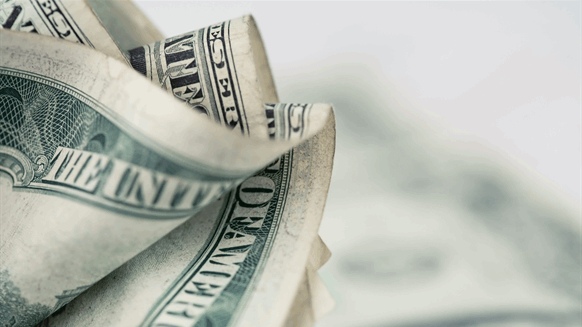The normal price of oil is $97 a barrel.
That’s what Skandinaviska Enskilda Banken AB (SEB) chief commodity analyst Bjarne Schieldrop said in a new SEB report, which was sent to Rigzone on Tuesday.
“Normal in the eyes of most market participants today is $60 per barrel, but that perception is likely based largely on recent market experience,” Schieldrop said in the report.
“The average price of Brent crude between 2015 and 2019 was $58.5 a barrel, but it was a boom period in non-OPEC supply, mainly shale oil,” he added.
“But the shale oil supply boom is now increasingly coming to an end. Looking more broadly at the last 20 years, the nominal average price was $75 a barrel, but in inflation-adjusted terms it to actually be $97 per barrel,” he continued.
In the report, Schieldrop defined 2015-2019 as “a very special period with booming non-OPEC supply whenever the WTI price moved above $45 a barrel.”
The SEB analyst noted in the report that we should think of the “shale oil boom years” as the “period of depressed prices.”
“Furthermore, adjusted for inflation, the actual average price during this period was actually $72.2 per barrel and not $58.5 per barrel,” he said in the report.
“If, however, we zoom out a bit and look at the last 20 years, we get a nominal average of $75 per barrel. The real, average inflation-adjusted price over the last 20 years, however, is $97 per barrel,” he added , noting that the price of dated Brent crude closed at $96 per barrel on September 18.
“Worth noting, however, is that for this inflation adjustment to make sense, the assumed cost of production would have to actually rise along with inflation, and as such create a ‘rising price floor’ for oil based on actual cost increases,” he continued.
Schieldrop noted in the report that if costs in real terms are falling due to productivity improvements, these inflation-adjusted prices will have limited impact on future prices.
“What matters more specifically is the development of real production costs for non-OPEC producers and the possibility of increasing that production,” he said.
“Environmental policy in OECD countries is, of course, a clear limiting factor for non-OPEC oil production growth and possibly a much more important factor than the cost of production itself,” he said. add.
In a separate report sent to Rigzone on Monday, Schieldrop said it is very likely that we will see Dated Brent move above $100 a barrel.
“It’s now less than $5 a barrel from that level and all it takes is noise to push it up,” Schieldrop stated in that report.
In another report sent to Rigzone on Tuesday, Standard Chartered projected that the price of ICE Brent crude will average $88 per barrel in the third quarter of this year and $93 per barrel in the fourth quarter.
In a report sent to Rigzone last week, BofA Global Research analysts said Brent prices could top $100 a barrel before the end of the year “if OPEC+ maintains cuts against the positive backdrop of Asian demand”.
The US Energy Information Administration’s latest short-term energy outlook, released earlier this month, forecast Brent spot prices to average $84.46 a barrel this year.
In its September oil market report, the International Energy Agency noted that oil prices traded in a tight range throughout August, “with North Sea Dated hovering around $85 a barrel and price volatility at multi-year lows.”
“Prices rallied late in the month as fundamentals picked up again, breaking above $90 a barrel for the first time in 10 months after Saudi Arabia and Russia extended voluntary output cuts through the end of of 2023,” the IEA added to oil. market report
To contact the author, please send an email andreas.exarcheas@rigzone.com


